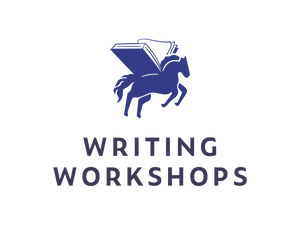Blog
Theme, Plot, and Protagonist: Understanding the 3 Make-or-Break Forces Behind Your Next Novel
by Writing Workshops Staff
5 years ago

So you have an idea for a novel - and you know it’s going to be epic.
Full-scale battles, heated romances, and jaw-dropping twists and turns will converge on every page, spinning a tale that’ll have your reader fully enthralled in your narrative until the very end.
Or maybe, your newest character is developed so well that it would take a team of psychologists to unpack his or her depths. Surely, this intriguing protagonist is enough to capture your audience with bated breath.
Even better, you’ve spent the last twenty years creating a worldview so original, you can’t wait to share your theme through poetic and haunting prose.
Now here’s the reality.
While theme, plot, and protagonist are all necessary to tell a good story, they must work synergistically in order for your novel to be great and memorable.
Let’s dive into each device, and take a look at how they can beautifully support each other.
Theme: The Underlying Current Behind Your Words
A story without a theme is just a series of stuff – random encounters destroyed by chance or blessed by a stroke of luck. You need a theme to underscore the story in order to make a profound and convincing point about human nature. Your theme breathes life into your story, and can support the plot in multiple ways:
- Your characters’ dialogue will often hold traces of the theme. How do they speak with each other? How do they react to challenges? Your point of view on human nature will shine through the words your characters speak.
- Are your characters set up for success, or failure? Your theme will guide the plot, depending on its general philosophy. A stark world of chaos and destruction might not bode well for your character to reach their end goal, while a world that celebrates courage, optimism, and hope for the future will boast a triumphant conclusion.
Plot: Putting the Wheels in Motion
When most of us think about a good story, the plot is the first thing that comes to mind. In essence, your plot is the vehicle through which your theme and protagonist move. It’s a series of carefully constructed cause and effect scenarios through which your characters develop – for better or for worse.
When crafting elements of your plot, make sure to consider:
- How will your protagonist change through the moving parts of your narrative? Whether it’s a battle scene, job promotion, murder, or marriage, your plot must create some friction that forces your character into a dynamic shift.
- Plots are only riveting when they allow the reader to feel the struggles and triumphs of the protagonist moving through them. For this reason, a solid plot has more to do with the protagonist’s internal conflict than it does with the action relayed on the page.
Protagonist: The Emotional Core of Your Novel
The theme is your distinct perspective on human nature, and plot is the vehicle that moves the story from point A to point B. But the real crux of your story’s emotional impact lies in the protagonist.
Here are some things to consider when developing your main character:
- Human beings are naturally wired for an emotional response. Your protagonist must have both a goal and an internal conflict in order for them to promote an empathic response in the reader.
- A good story hinges on the protagonist's reaction to and subsequent development because of the trials and tribulations through which they move. The more you understand your character’s psyche, worldview, and unique internal challenges, the greater draw your story will have on your reader.
Master each of these three elements, and practice weaving them together into one cohesive narrative where the plot reveals the protagonist's development, and the protagonist’s development reveals the theme. Then you will be well on your way to writing a novel that even the most skeptical reader won’t be able to put down.
